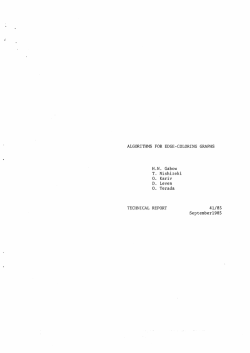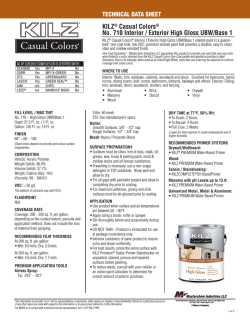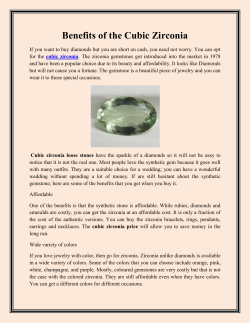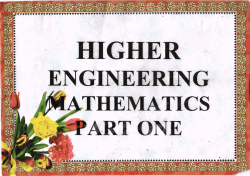
Lecture Note #11
Introduction to Mathematical Optimization (Lecture #11) Shunsuke HAYASHI Today’s topic Basic Knowledge of Graph Theory (グラフ理論の基礎知識) Graph Graph is defined by a vertex set V and an edge set E. vertex edge vertex set (頂点集合) edge set (辺集合) Note: Every edge can be written as a pair of two vertices, equivalently. Vertex(頂点) is also called node(接点), point(点), etc. Edge(辺) is also called link(リンク), branch(枝), arc(弧,弦), etc. 3 Directed and Undirected Graphs Undirected graph (無向グラフ) Each edge does not have direction. Directed graph (有向グラフ) Each edge has direction. 4 Graph Graph can visualize various systems. 5 Terminology (用語) 1 Graph A Graph B 次数 The followings are defined only for “directed” graphs. 入次数 出次数 6 Terminology (用語) 2 Graph A Graph B self-loop(自己ループ) multiple edge (多重辺) 7 Simple graph (単純グラフ) simple graph simple graph a graph including neither self-loops nor multiple edges not simple graph In the graph theory, many graphs are simple graphs. 8 Complete graph (完全グラフ) complete graph a graph having edges for any pair of complete graph incomplete graph 9 Bipartite graph (2部グラフ) bipartite graph not bipartite graph 10 Bipartite graph is used for matching problem, etc. Complete bipartite graph (完全2部グラフ) complete bipartite graph incomplete bipartite graph Complete bipartite graph is not a complete graph in general. Path and cycle of graph is called a path (経路) Example of path Path can also be written by means of edges. Length of path number of edges in the path 12 Path and cycle of graph is called a path (経路) Example of path elementary path (初等路) simple path (単純路) a path which does not use the same vertices twice (or more) a path which does not use the same edges twice (or more) 13 Path and cycle of graph is called a cycle (閉路) Example of cycle elementary cycle (初等閉路) simple cycle (単純閉路) a cycle which does not use the same vertices twice (or more) a cycle which does not use the same edges twice (or more) 14 Subgraph and complement graph subgraph (部分グラフ) subgraph induced by ( に誘導された部分グラフ) 15 Graph Subgraph and complement graph complement graph (補グラフ) Notice: In considering the complement graph, the original graph G must be simple. Isomorphic graph 同形 Isomorphic graphs 17 Connectivity of undirected graph (無向グラフの連結性) (連結している) def 同値関係 18 Connected components (equivalent class (同値類) w.r.p. ) If G consists of one connected components, then the graph is said to be connected. Graph with several connected components Connected graph 19 Tree and forest Forest (森) a graph having no cycle Tree (木) a connected forest Leaf (葉) a vertex in a tree/forest with degree 1 leaf leaf Forest 次数 Tree 20 Subtree and Spanning tree Subtree (部分木) Spanning tree (全域木) 21 Cut-set, cut, and minimal cut-set 22 Cut-set, cut, and minimal cut-set 23 Cut-set, cut, and minimal cut-set 真部分集合 極小カットセット Cut-set, cut, and minimal cut-set Theorem Plane graph and Planar graph (平面グラフと平面的グラフ) Plane graph Planar graph plane graph planar graph non-planar graph 26 Plane partition by plane graph A plane graph partitions a 2D plane naturally. In other words, if a 2D plane is partitioned to several area, then its adjacent relation can be drawn by a plane graph. 27 Seven Bridges in Königsberg (ケーニヒスベルグの七つの橋) Can we go across all the 7 bridges without duplication? Königsberg (= Kaliningrad) a city of Russia Can we draw this without lifting the brush from the paper? No! 28 4 Colors problem We want to put colors on each vertex so that any adjacent vertices do not have the same color. G If G is a plane (or planar) graph, how many colors are need at minimum? The answer is 4. This is equivalent with a well-known 4 colors problem. (How many colors are needed to paint a map in different colors?) 29
© Copyright 2024



